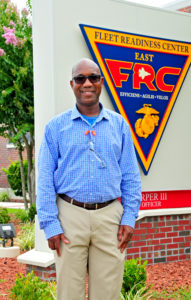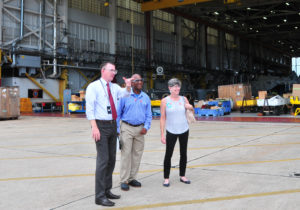From Internship to Product Implementation
It’s been said that teachers are preparing students for careers that don’t even exist yet. I definitely believe this. I have witnessed how certain careers have become obsolete in our lifetimes. How many of us remember a telephone operator? What about a full service gas station attendant? And… if you’ve seen the movie; “Hidden Figures”, set in the 1950s, then you know that a computer wasn’t always the device that I’m using to write this blog now.
With society changing so rapidly and artificial intelligence replacing workers, many of the careers that we know about today probably won’t exist in the next 10 years. Additionally, those that do, will be performed very differently. The only careers that are truly safe from automation will be ones that rely heavily on critical thinking skills, collaboration, communication, and creativity. These have been commonly referred to as: “The 4 C’s of 21st Century Learning.”
I prefaced my blog with these thoughts to show that my product will incorporate ideas that will help the English learners that I work with become real world problem solvers and effective communicators while gaining knowledge about STEM careers and activities.
The weeks that I spent observing how engineers communicate and approach problems they encounter inspired me to create a product where students would ask a big question about a real problem, research it, and report about their findings to a real audience. I was fortunate enough to find an organization that was looking for “citizen scientists” to gather data about research that they are doing. This is the first part of my product: My English learners will investigate the effects of outer space on the seed germination of tomato plants and compare sizes and shapes of ground plants and space plants.
The next piece of the product came about as I observed engineers engage in the engineering design process. I watched them plan, research, develop prototypes, and test their solutions to problems that had been brought to their attention. This led to the idea of having students design a suitable container to house the seeds from which the data would be collected. My English learners will be able to use the resources of my mentor organization, FRC EAST’s Fab Lab to 3-D print and laser cut pieces to assemble into a planter with a coded timer to self-water the plants.
Another integral part of my product is English language development through communication in groups to discuss observations and to report data to an audience. I was inspired by the amount of authentic collaboration and communication that I saw among the engineers at FRC East. I saw that engineers need to understand a problem that is communicated to them, to meet and discuss solution ideas, plans, and to present their design idea through a PDR (preliminary design review). They may even have to defend and support ideas they have using data and facts. As one engineer stated, “100% airworthiness and safety is our goal. One error can cause a part to fail. Even if you are 98% certain, everyone must work together to get to 100%.” That is true collaboration.
Overall, my product will have four components: 1) Designing a planter with a timed watering system using a scaffolded version of the engineering design process, 2) Investigating the effects of outer space on tomato seeds compared with ground tomato seeds, 3) Communicating scientific data and analyzing and interpreting patterns to an audience, and 4) Researching and exploring STEM careers.
I hope my product will give English learners a chance to participate in project based learning, engage in the citizen science process, use the engineering design process, and have the chance to analyze, interpret and communicate data to an audience in an environment rich with language support strategies while engaging in STEM related activities and practices.
My product transfers the knowledge about teamwork and collaboration that I gained from my internship directly into the team/collaborative approach that I will use to have the students report their observations of the plants’ growth, development, and size and shape comparison. I am hopeful that this will give the students practice working this way so that this practice of approaching a problem in this manner will be the normal process. I have seen research that shows how collaborative and cooperative learning can boost achievement, but seeing this practice in the workplace shows me that it will be a necessary skill that the students will have to use daily in their careers.
An additional component of my product will include a STEM career night. This will give students a chance to present the results of their observations to parents and members of the community. Engineers and representatives from FRC EAST will also be in attendance to provide information about STEM careers. I am now more aware of careers involving STEM that exist in the community and will use this as an opportunity to inform students about them. Another future component of this product will be to have students visit the FRC EAST facility to observe STEM jobs.
I have not really had any challenges implementing the product so far other than scheduling all the activities for the students at my schools. Communication with my mentor and the team has been great. The support has been great. I would consider the new found support from the engineers at FRC EAST one of my biggest successes.

 My summer internship
My summer internship process.
process.